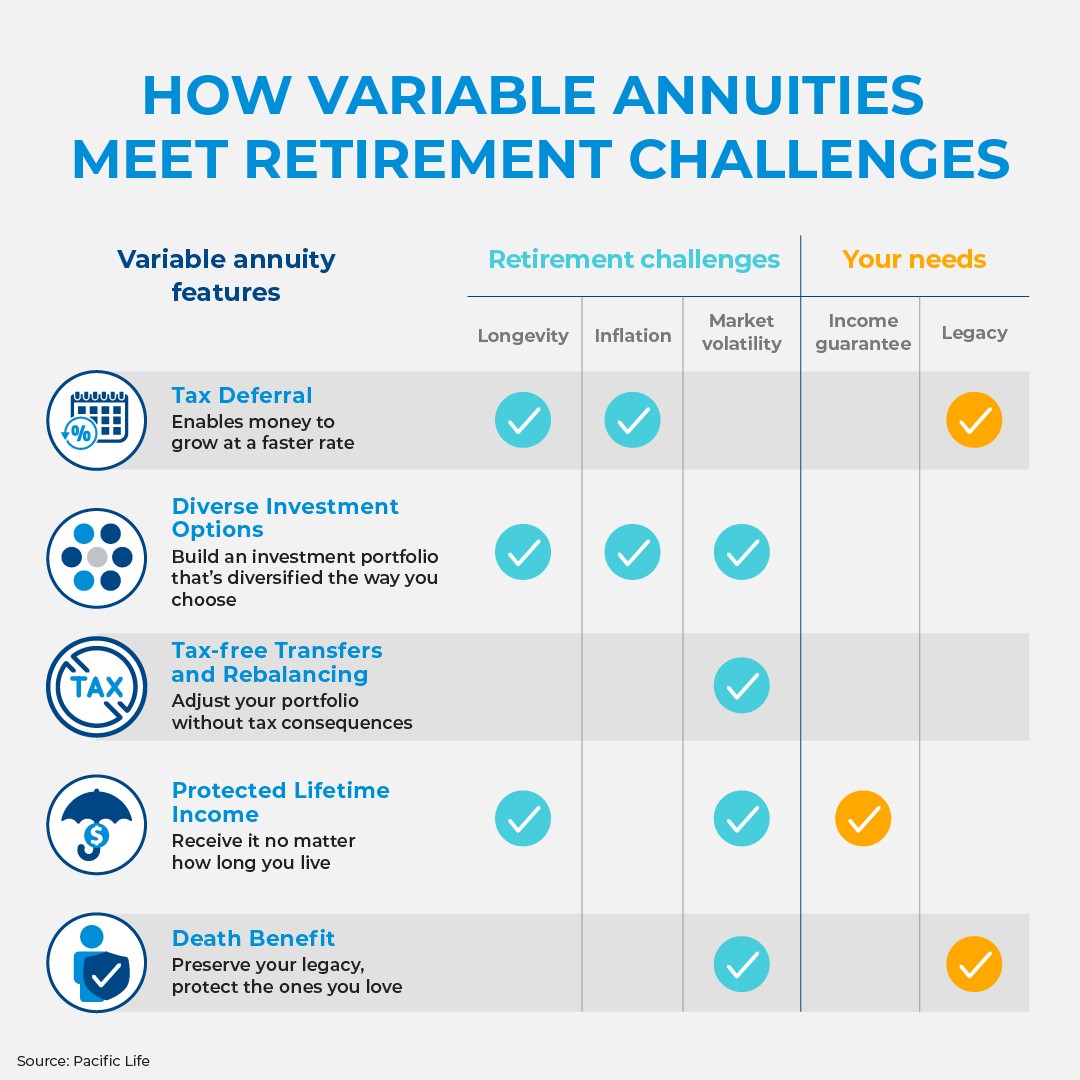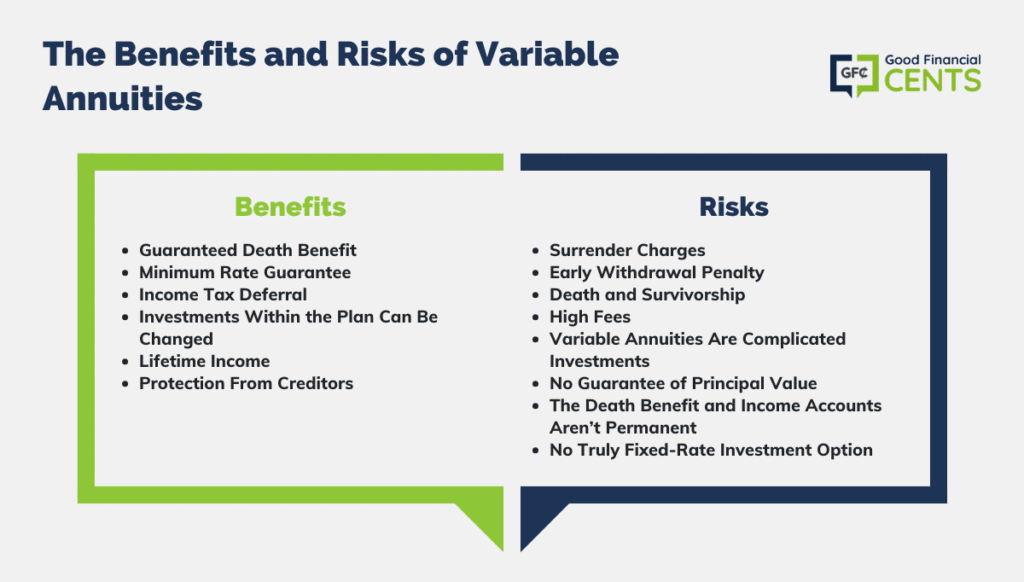Featured
Table of Contents
Simply as with a repaired annuity, the proprietor of a variable annuity pays an insurer a lump amount or series of settlements in exchange for the assurance of a collection of future repayments in return. However as discussed over, while a taken care of annuity grows at an ensured, constant price, a variable annuity grows at a variable rate that depends upon the efficiency of the underlying financial investments, called sub-accounts.

During the buildup phase, properties bought variable annuity sub-accounts expand on a tax-deferred basis and are strained only when the agreement owner withdraws those earnings from the account. After the buildup stage comes the income phase. Over time, variable annuity properties ought to in theory increase in value up until the agreement proprietor determines he or she wish to begin taking out cash from the account.
The most considerable issue that variable annuities typically existing is high price. Variable annuities have numerous layers of costs and expenses that can, in aggregate, create a drag of up to 3-4% of the agreement's worth each year.
Exploring Deferred Annuity Vs Variable Annuity Everything You Need to Know About Financial Strategies Defining the Right Financial Strategy Features of Smart Investment Choices Why Choosing the Right Financial Strategy Can Impact Your Future How to Compare Different Investment Plans: A Complete Overview Key Differences Between What Is Variable Annuity Vs Fixed Annuity Understanding the Key Features of Fixed Vs Variable Annuity Pros And Cons Who Should Consider Strategic Financial Planning? Tips for Choosing Annuities Variable Vs Fixed FAQs About What Is A Variable Annuity Vs A Fixed Annuity Common Mistakes to Avoid When Choosing Choosing Between Fixed Annuity And Variable Annuity Financial Planning Simplified: Understanding Your Options A Beginner’s Guide to Fixed Vs Variable Annuity A Closer Look at How to Build a Retirement Plan
M&E expense charges are computed as a percent of the contract value Annuity issuers hand down recordkeeping and various other management prices to the contract proprietor. This can be in the type of a level annual fee or a percent of the contract value. Management charges may be consisted of as part of the M&E danger cost or may be evaluated individually.
These charges can vary from 0.1% for passive funds to 1.5% or more for proactively managed funds. Annuity contracts can be customized in a variety of means to offer the details needs of the agreement owner. Some usual variable annuity motorcyclists include assured minimal buildup advantage (GMAB), ensured minimum withdrawal benefit (GMWB), and ensured minimum earnings benefit (GMIB).

Variable annuity payments offer no such tax reduction. Variable annuities have a tendency to be highly inefficient vehicles for passing riches to the future generation since they do not delight in a cost-basis adjustment when the initial contract proprietor passes away. When the proprietor of a taxable investment account passes away, the price bases of the financial investments kept in the account are adapted to reflect the marketplace costs of those financial investments at the time of the proprietor's death.
Decoding How Investment Plans Work A Comprehensive Guide to Fixed Income Annuity Vs Variable Growth Annuity Defining Fixed Income Annuity Vs Variable Growth Annuity Advantages and Disadvantages of Different Retirement Plans Why Choosing the Right Financial Strategy Is a Smart Choice Indexed Annuity Vs Fixed Annuity: Explained in Detail Key Differences Between Variable Annuities Vs Fixed Annuities Understanding the Risks of Variable Vs Fixed Annuities Who Should Consider Retirement Income Fixed Vs Variable Annuity? Tips for Choosing Fixed Income Annuity Vs Variable Annuity FAQs About Fixed Income Annuity Vs Variable Annuity Common Mistakes to Avoid When Planning Your Retirement Financial Planning Simplified: Understanding Your Options A Beginner’s Guide to Annuities Variable Vs Fixed A Closer Look at Fixed Vs Variable Annuity Pros Cons
Such is not the case with variable annuities. Investments held within a variable annuity do not receive a cost-basis modification when the initial owner of the annuity passes away.
One considerable problem connected to variable annuities is the potential for disputes of rate of interest that might exist on the part of annuity salespeople. Unlike a financial advisor, who has a fiduciary responsibility to make investment decisions that profit the customer, an insurance broker has no such fiduciary obligation. Annuity sales are extremely profitable for the insurance coverage specialists that offer them due to high upfront sales payments.
:max_bytes(150000):strip_icc()/VariableAnnuitization-asp-v1-5dedf8fee4694d8dacd2ac7eb7b0757e.jpg)
Several variable annuity agreements include language which puts a cap on the percentage of gain that can be experienced by specific sub-accounts. These caps protect against the annuity owner from fully taking part in a part of gains that can or else be appreciated in years in which markets produce considerable returns. From an outsider's viewpoint, it would seem that financiers are trading a cap on investment returns for the abovementioned assured floor on financial investment returns.
As noted over, give up fees can severely restrict an annuity owner's capability to move possessions out of an annuity in the very early years of the agreement. Additionally, while a lot of variable annuities allow agreement proprietors to withdraw a specified quantity throughout the accumulation stage, withdrawals yet amount normally lead to a company-imposed fee.
Withdrawals made from a fixed rate of interest financial investment alternative can additionally experience a "market worth change" or MVA. An MVA readjusts the value of the withdrawal to reflect any changes in rates of interest from the time that the cash was purchased the fixed-rate option to the moment that it was withdrawn.

Rather usually, also the salespeople who sell them do not completely understand exactly how they work, and so salespeople in some cases exploit a buyer's feelings to sell variable annuities rather than the merits and suitability of the products themselves. Our team believe that investors should fully recognize what they own and just how much they are paying to possess it.
Analyzing Strategic Retirement Planning Key Insights on Fixed Vs Variable Annuity Pros Cons What Is the Best Retirement Option? Benefits of Choosing the Right Financial Plan Why Choosing the Right Financial Strategy Can Impact Your Future How to Compare Different Investment Plans: How It Works Key Differences Between Different Financial Strategies Understanding the Key Features of Annuity Fixed Vs Variable Who Should Consider Strategic Financial Planning? Tips for Choosing Fixed Indexed Annuity Vs Market-variable Annuity FAQs About Fixed Vs Variable Annuity Pros And Cons Common Mistakes to Avoid When Planning Your Retirement Financial Planning Simplified: Understanding Fixed Annuity Vs Equity-linked Variable Annuity A Beginner’s Guide to Variable Vs Fixed Annuity A Closer Look at Fixed Index Annuity Vs Variable Annuity
The exact same can not be claimed for variable annuity properties held in fixed-rate investments. These properties legally come from the insurance provider and would certainly consequently be at danger if the firm were to fail. Likewise, any warranties that the insurance provider has actually concurred to provide, such as an assured minimal income advantage, would remain in inquiry in case of a service failure.
As a result, possible buyers of variable annuities need to recognize and take into consideration the monetary problem of the providing insurance provider prior to participating in an annuity contract. While the benefits and drawbacks of various sorts of annuities can be disputed, the actual issue surrounding annuities is that of viability. Simply put, the question is: that should own a variable annuity? This inquiry can be tough to respond to, provided the myriad variations readily available in the variable annuity cosmos, but there are some fundamental guidelines that can help financiers make a decision whether or not annuities ought to play a role in their economic plans.
As the saying goes: "Buyer beware!" This short article is prepared by Pekin Hardy Strauss, Inc. Fixed annuity payout guarantees. ("Pekin Hardy," dba Pekin Hardy Strauss Wealth Management) for informational functions only and is not meant as an offer or solicitation for business. The info and information in this short article does not comprise legal, tax obligation, bookkeeping, financial investment, or other expert suggestions
Table of Contents
Latest Posts
Understanding Financial Strategies Key Insights on Annuities Variable Vs Fixed What Is Fixed Vs Variable Annuities? Features of Smart Investment Choices Why Choosing the Right Financial Strategy Matte
Exploring Pros And Cons Of Fixed Annuity And Variable Annuity A Closer Look at How Retirement Planning Works Breaking Down the Basics of Fixed Income Annuity Vs Variable Annuity Benefits of Choosing t
Highlighting the Key Features of Long-Term Investments A Comprehensive Guide to Investment Choices Breaking Down the Basics of Investment Plans Advantages and Disadvantages of Different Retirement Pla
More
Latest Posts